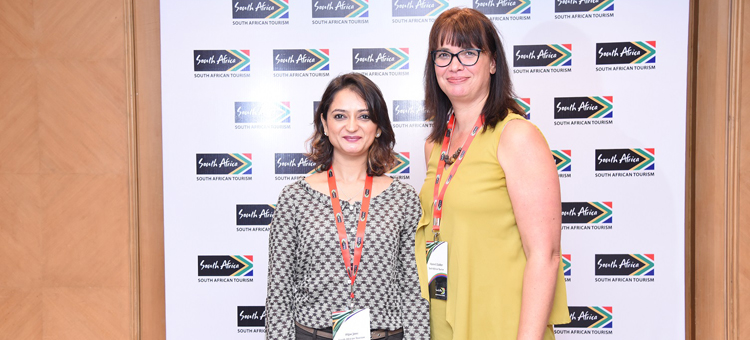Mumbai: In an ambitious PR outreach aimed at carving out a large slice of the market pie in India, currently the 8th largest international source market for South African Tourism, the African nation has rolled out the 15th edition of its biggest travel and trade initiative in India. South African Tourism’s much-touted Roadshow, which kicked off on February 12, will travel to five Indian cities- Mumbai, Kolkata, Bangalore, Delhi and Ahmedabad- and conclude on February 19.
The participation and scale is a reflection of the strong consumer demand in India. This roadshow is set to capitalise on the growing demand and align efforts to meet the evolving demands of the Indian traveller. This unique interactive platform has been developed with an aim to offer trade partners in the Indian market an opportunity to interact and educate on diverse product offerings and experiences from South Africa.
Hanneli Slabber, Regional General Manager, Asia/Australasia/Middle East, South African Tourism, said: “Not only has the Indian market grown considerably since our entry in 2005, demands of Indian travellers are also in a constant and rapid state of evolution even today. This makes cross-sharing of insights, trends and observations between Indian and South African partners extremely crucial. We have had South African products being tailored to suit these specific needs as a testament to the value proposition we see in the market.”
Last year proved to be a successful year for South African Tourism, which managed to keep its performance consistent to that of 2016. Alpa Jani, Acting Hub-Head, Middle East/India/South East Asia, South Africa Tourism said, “We have always recorded an outstanding response from the Indian travel trade and are eagerly looking forward to seeing the positive impact this roadshow will have towards driving Indian traveller traffic to South Africa in 2018. India is undoubtedly a significant market for us and all trade and consumer efforts are directed towards harnessing the true potential this market has to offer. We are also focusing on customising our engagements and product offerings to suit the unique requirements from each of our target regions within India.”
In addition to experiences, accommodation establishments, destination management companies, airlines and tourism associations will be among the trade partners in the roadshow. Not only does it provide the perfect opportunity to showcase the exotic locales in SA, it would also help to tap into the local market. This B2B engagement would act as catalysts for booking conversions which stimulate visitor growth, hence, contribute to achieving the targets charted out for 2018. Some key trends witnessed in South Africa in 2018 are the surge in demand for pushing travel boundaries with adventure is at an all-time high and the rise in self-drive holidays amongst couples and young families.
Interestingly, the love for comfort food while travelling persists and travel decisions are significantly influenced by peer word-of-mouth. Keeping some of these consumer trends in mind, one of the key focus areas is to go beyond the immensely popular Cape Town, Durban, Johannesburg & surrounds and Kruger National Park and create awareness about new destinations such as Oudtshoorn, Knysna, Plettenberg Bay, Port Elizabeth and the Drakensberg region.
Flight services
Over 70 international airlines now fly into South Africa. Efforts are on to increase seat capacity on relevant flight routes ex-India. Presently, Mumbai and Delhi are connected to South African cities by Emirates, Ethiopian Airlines, Etihad Airways, Air Seychelles, Turkish Airlines and Jet Airways, which fly via their respective hubs and domestic India connections.
Exchange rate
The Rand (ZAR)-Rupee exchange rate has been relatively favourable for the India market. Since the South Africa product quote comes in ZAR and not US dollars, Indian travellers are able to buy more experiences and activities for less money thus, making South Africa a value-for-money destination In addition to tourist arrivals, in-destination expense remained stable while the duration of stay by Indians saw a positive spike. For the period of January 2017 to September 2017, MICE contributed 32.8 per cent of total Indian arrivals into SA, leisure holidays made up 26.8 per cent while business travellers was 16.4 per cent and VFR was pegged at 16 per cent.
Millennial rush
Another significant observation was the rise in millennial Indian travellers to South Africa. In the first quarter of 2017, nearly 35 per cent of the Indian visitor base comprised 35-year-olds while for the second quarter of the year, this pie grew to 46 per cent. In 2017, Mumbai contributed 37 per cent of the overall Indian arrivals to South Africa while Delhi was at 22 per cent Gujarat at 11 per cent, Bengaluru at 8 per cent and West Bengal at 7 per cent.





